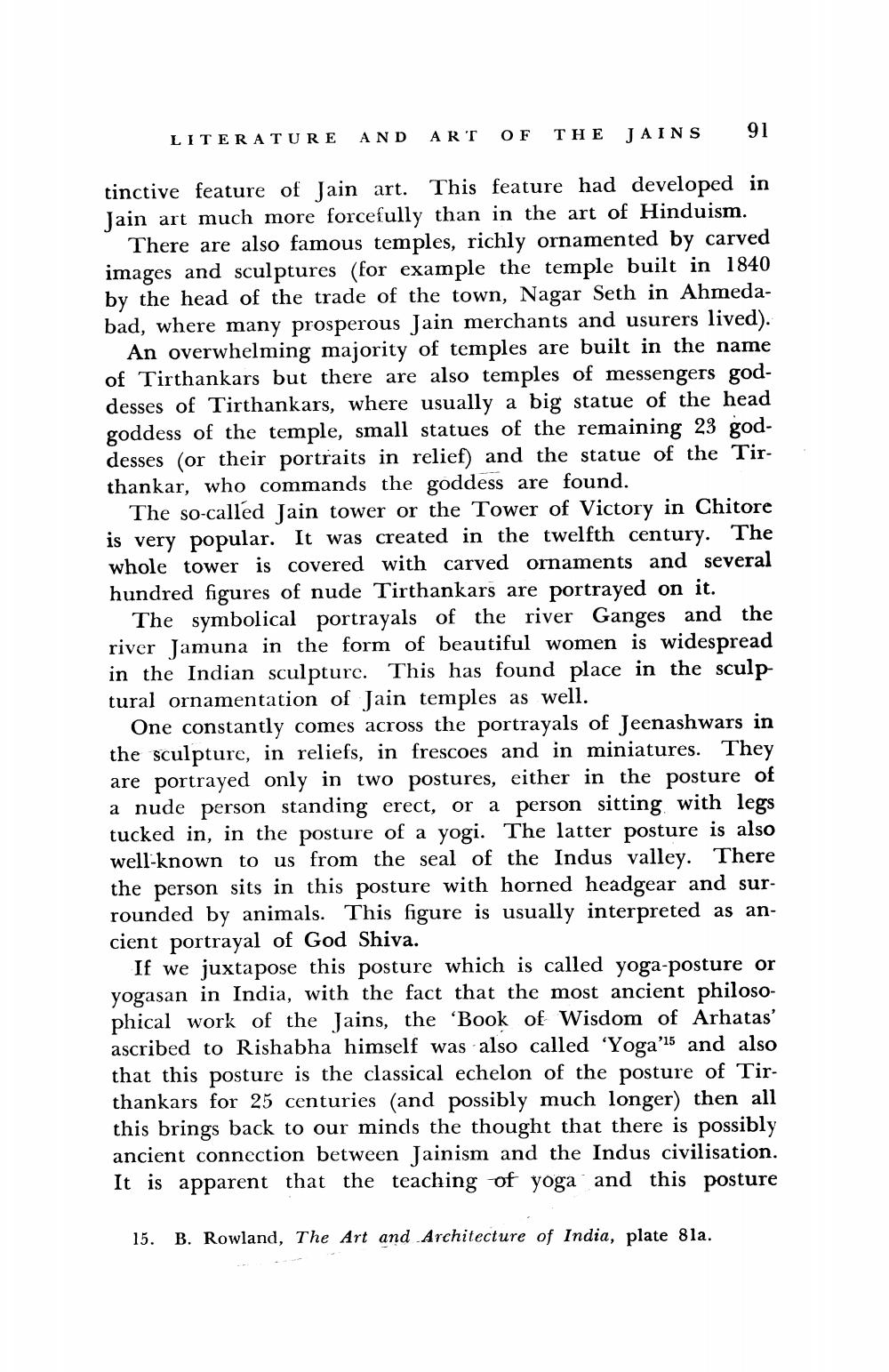________________
LITERATURE AND ART OF THE JAINS
91
tinctive feature of Jain art. This feature had developed in Jain art much more forcefully than in the art of Hinduism.
There are also famous temples, richly ornamented by carved images and sculptures (for example the temple built in 1840 by the head of the trade of the town, Nagar Seth in Ahmedabad, where many prosperous Jain merchants and usurers lived).
An overwhelming majority of temples are built in the name of Tirthankars but there are also temples of messengers goddesses of Tirthankars, where usually a big statue of the head goddess of the temple, small statues of the remaining 23 god. desses (or their portraits in relief) and the statue of the Tirthankar, who commands the goddess are found.
The so-called Jain tower or the Tower of Victory in Chitore is very popular. It was created in the twelfth century. The whole tower is covered with carved ornaments and several hundred figures of nude Tirthankars are portrayed on it.
The symbolical portrayals of the river Ganges and the river Jamuna in the form of beautiful women is widespread in the Indian sculpture. This has found place in the sculptural ornamentation of Jain temples as well.
One constantly comes across the portrayals of Jeenashwars in the sculpture, in reliefs, in frescoes and in miniatures. They are portrayed only in two postures, either in the posture of a nude person standing erect, or a person sitting with legs tucked in, in the posture of a yogi. The latter posture is also well-known to us from the seal of the Indus valley. T the person sits in this posture with horned headgear and surrounded by animals. This figure is usually interpreted as ancient portrayal of God Shiva.
If we juxtapose this posture which is called yoga-posture or yogasan in India, with the fact that the most ancient philosophical work of the Jains, the 'Book of Wisdom of Arhatas' ascribed to Rishabha himself was also called 'Yogaʼ25 and also that this posture is the classical echelon of the posture of Tirthankars for 25 centuries (and possibly much longer) then all this brings back to our minds the thought that there is possibly ancient connection between Jainism and the Indus civilisation. It is apparent that the teaching of yoga and this posture
15. B. Rowland, The Art and Architecture of India, plate 8la.




